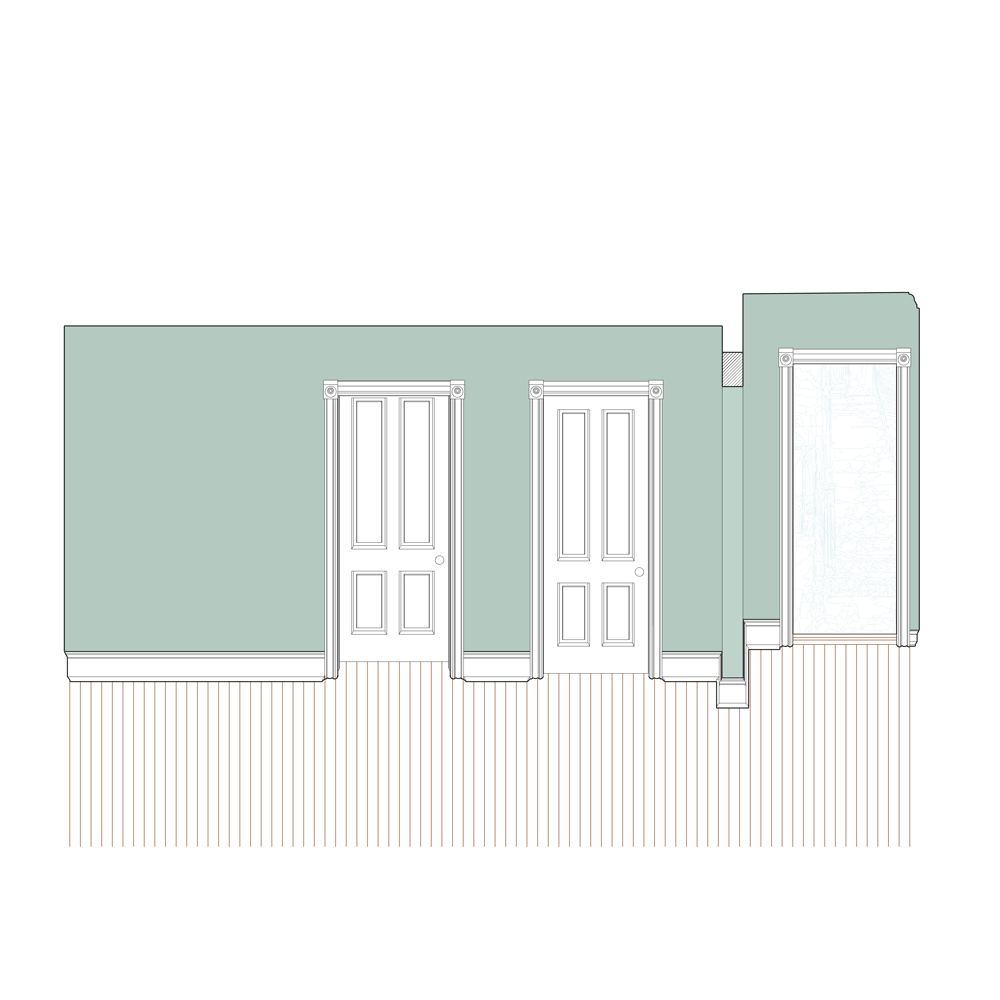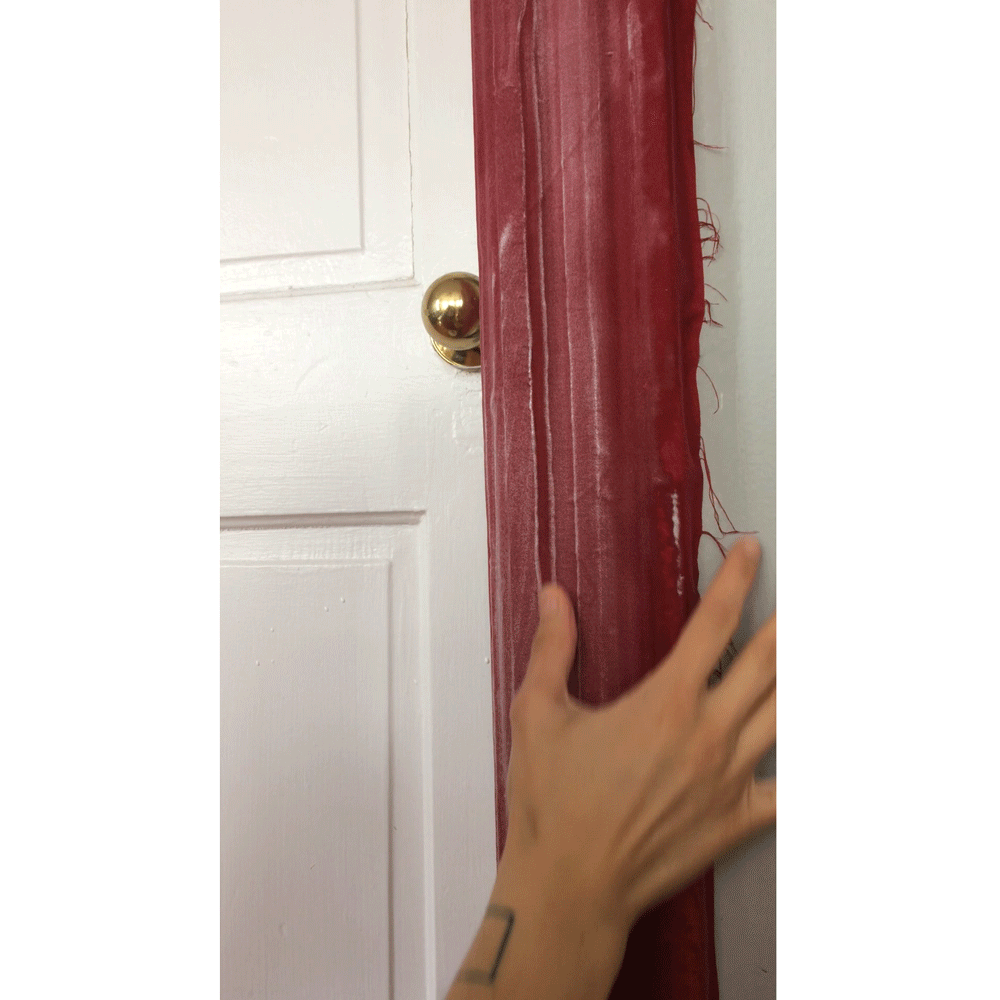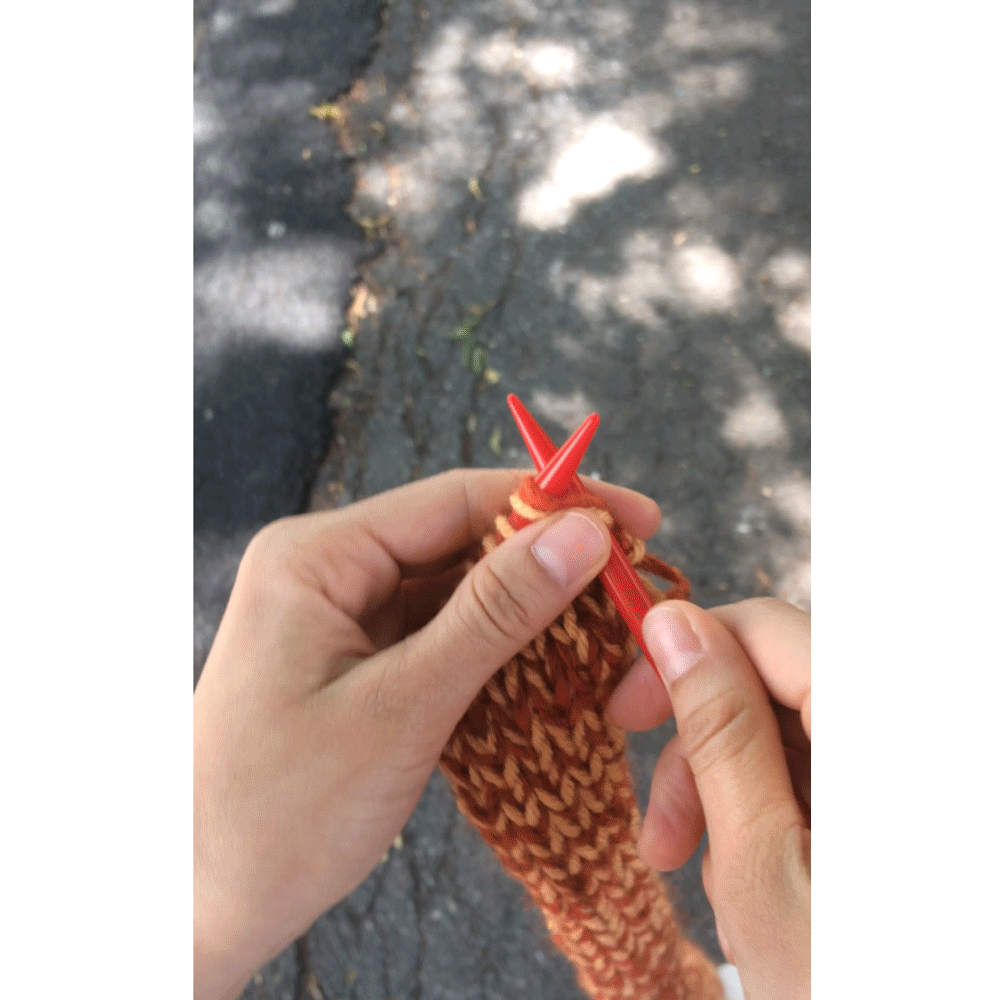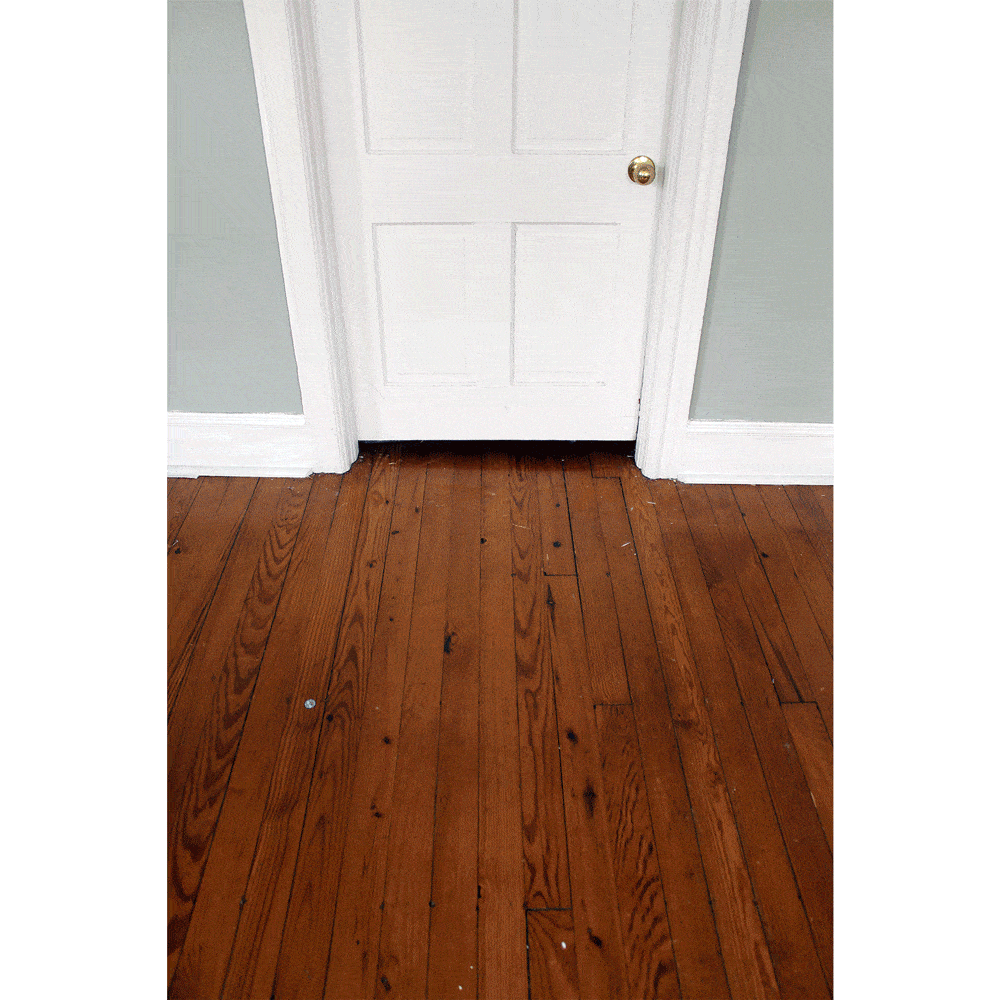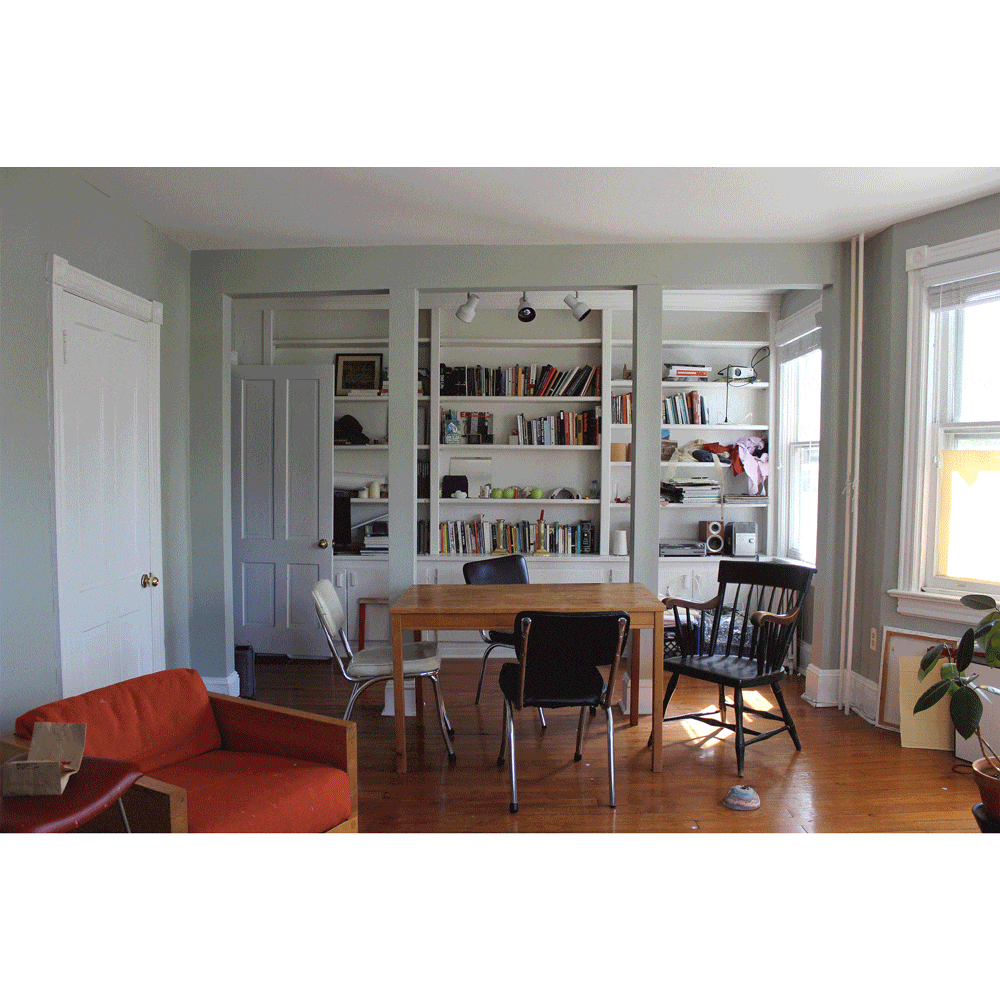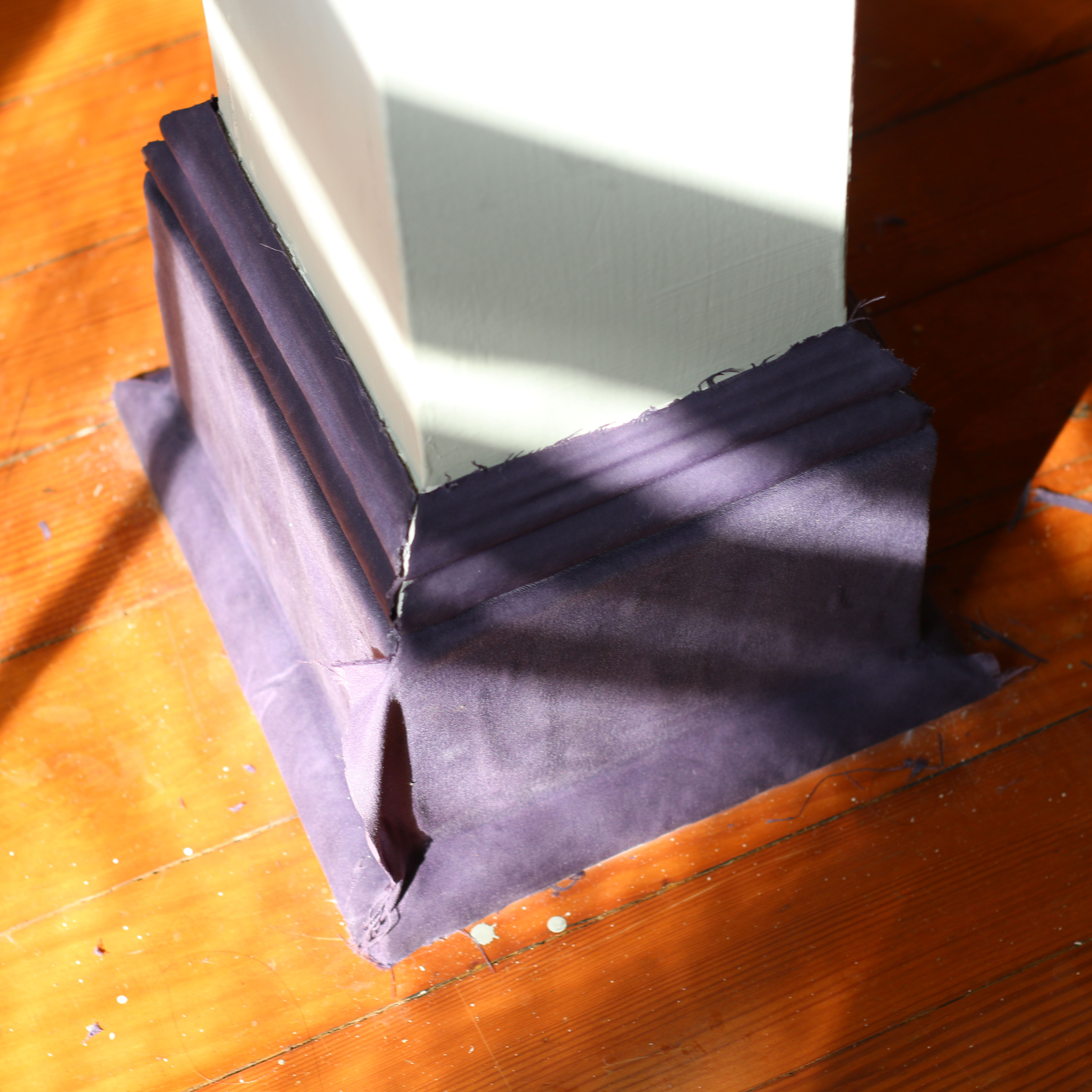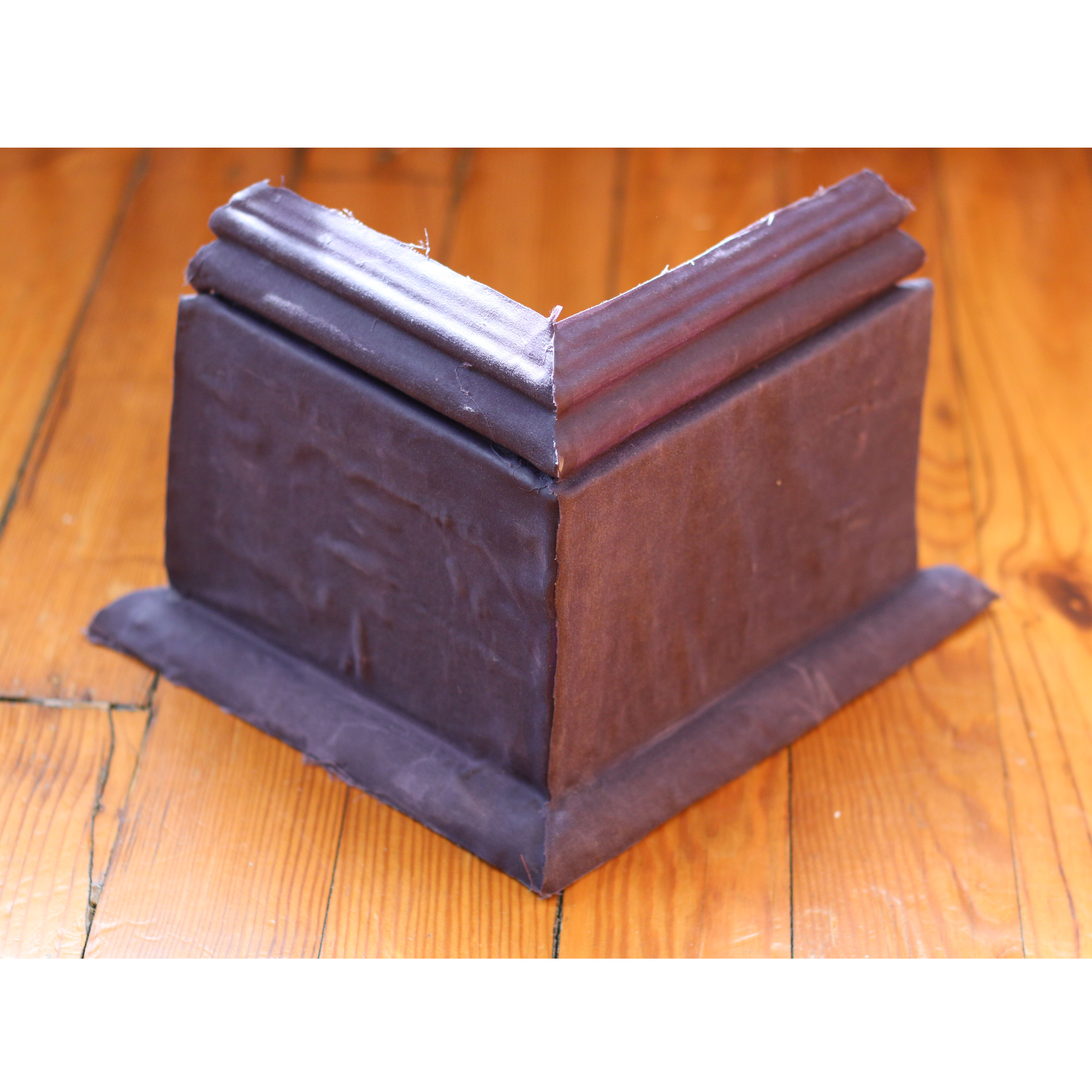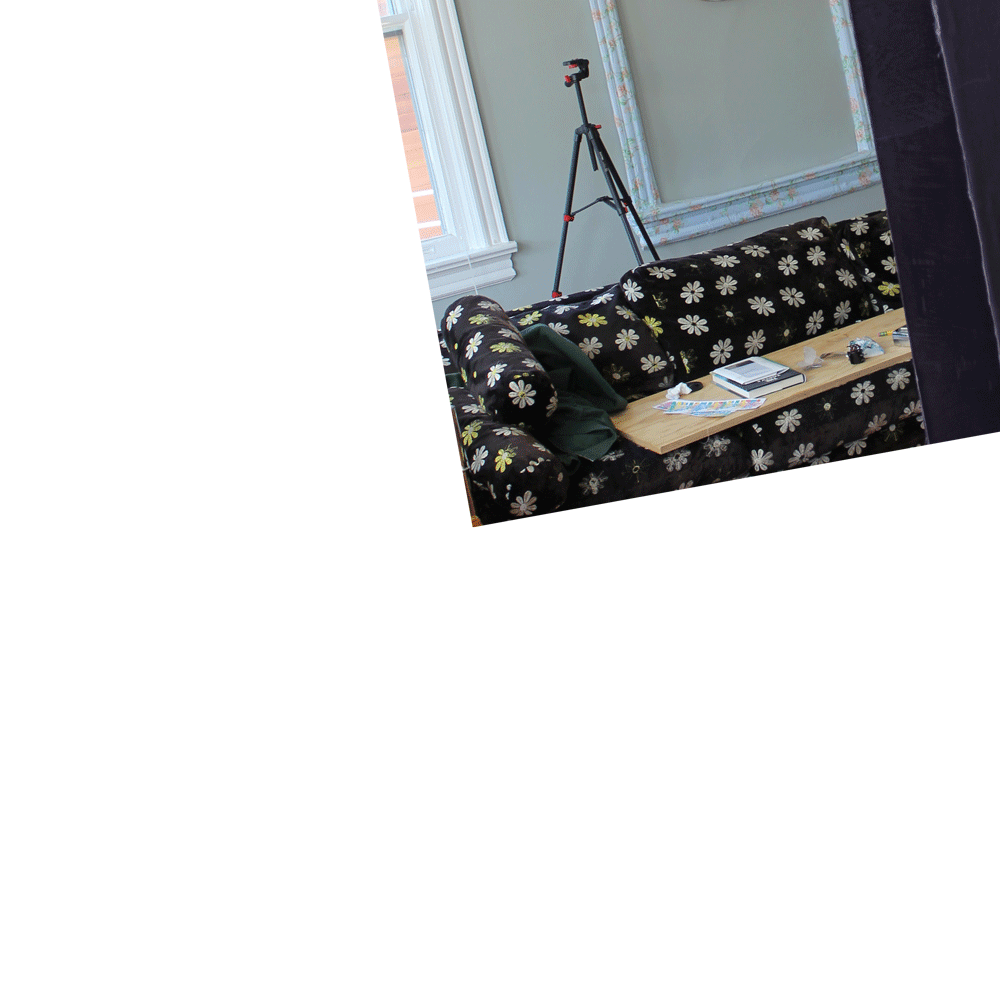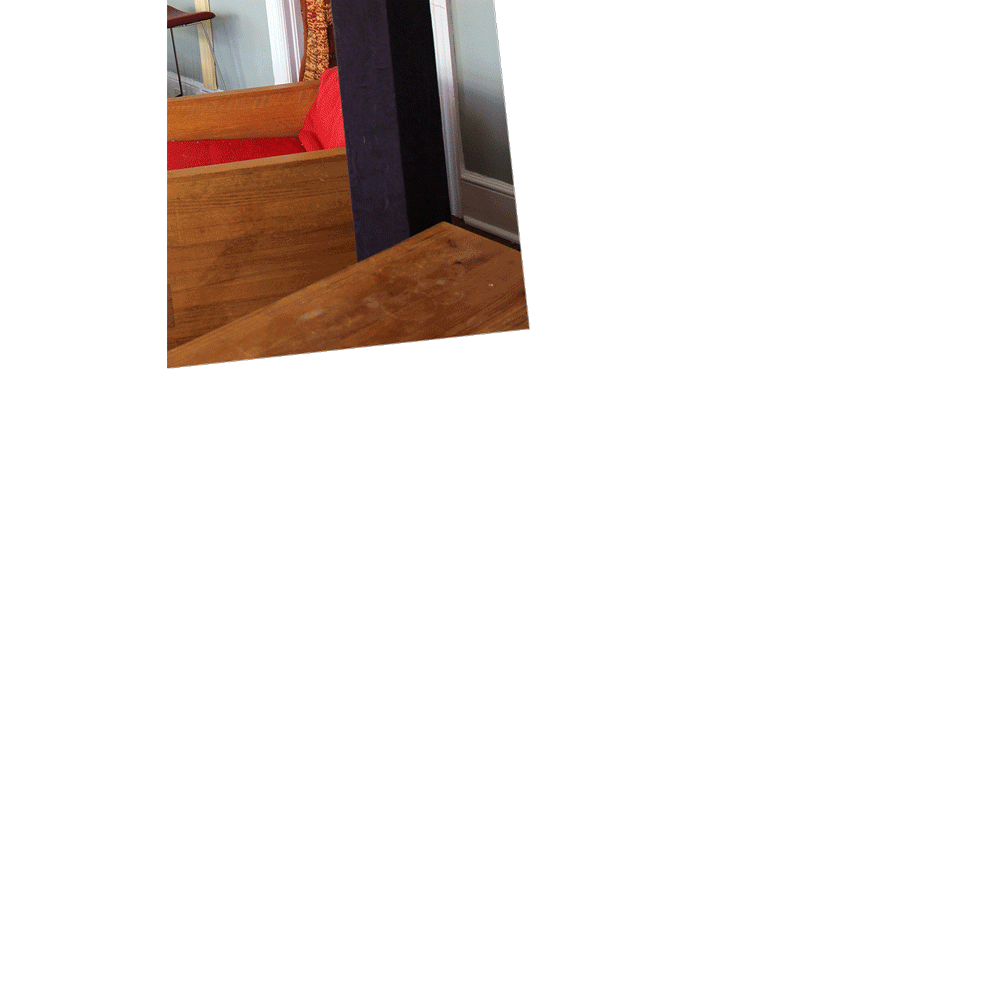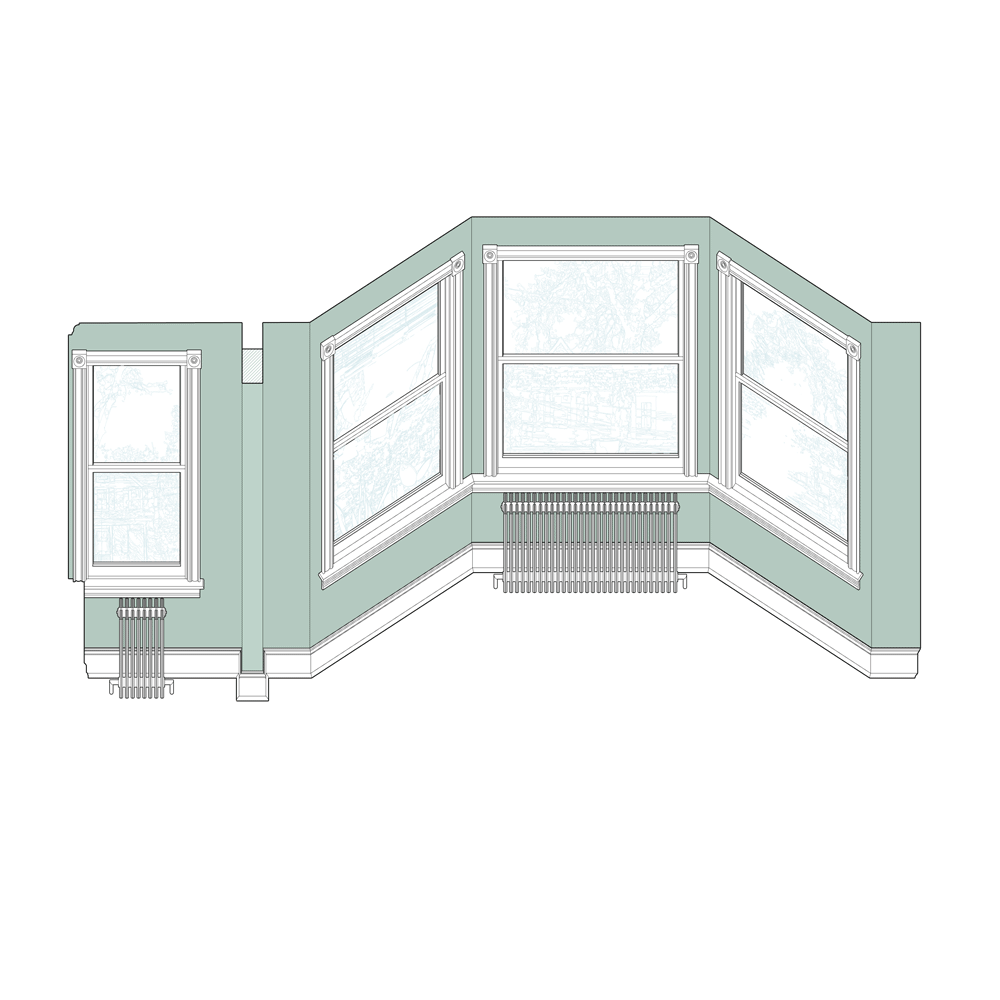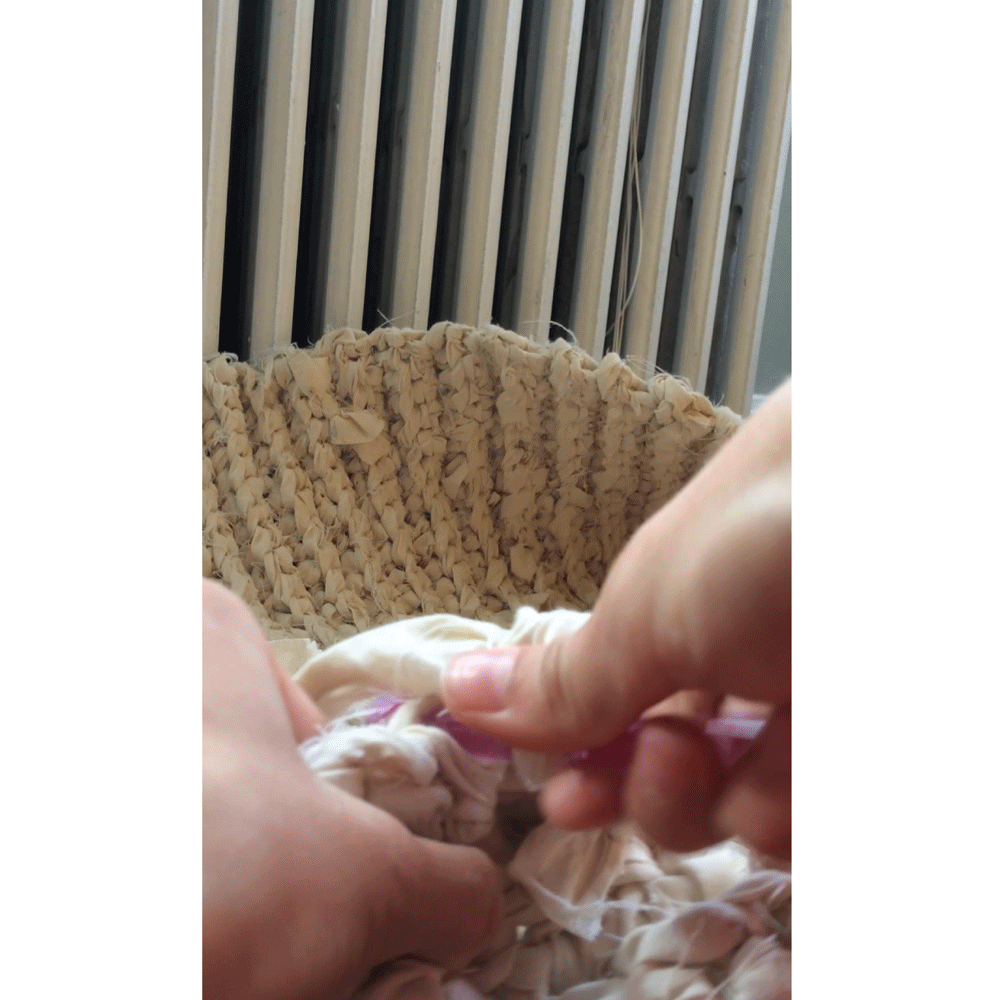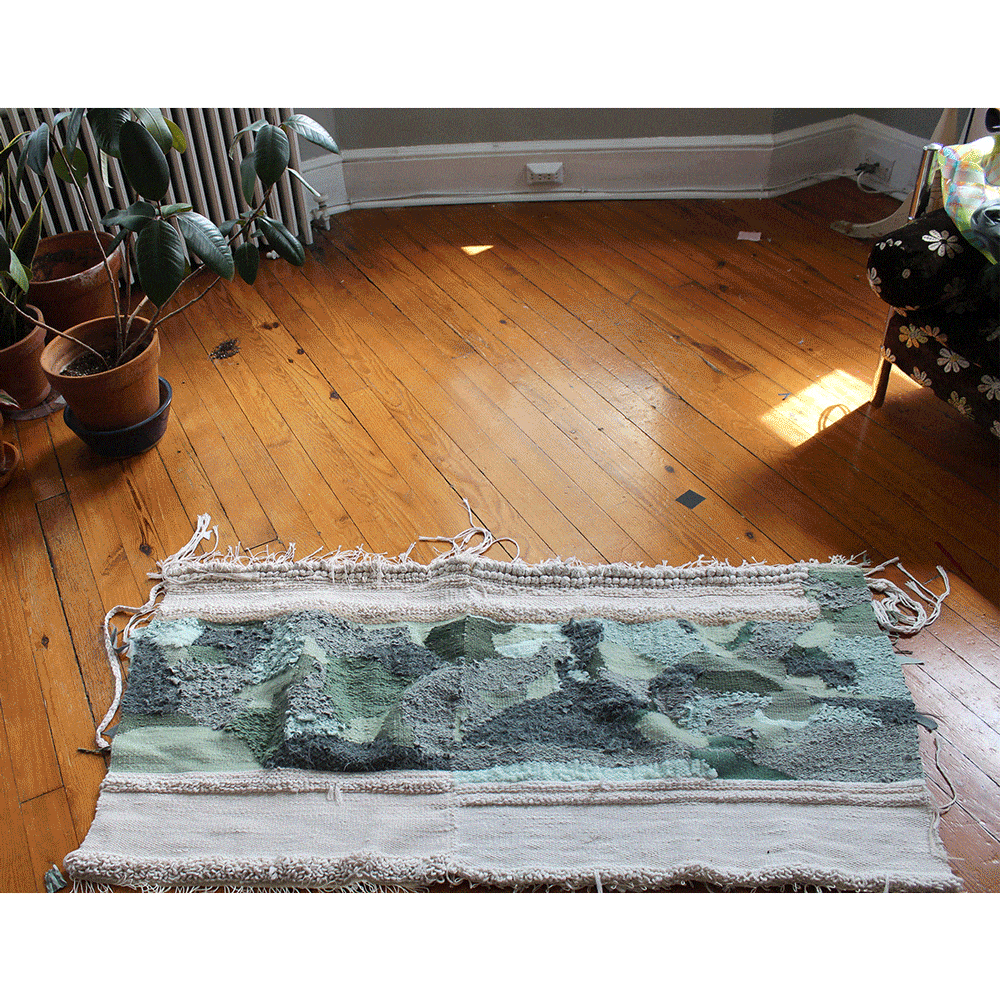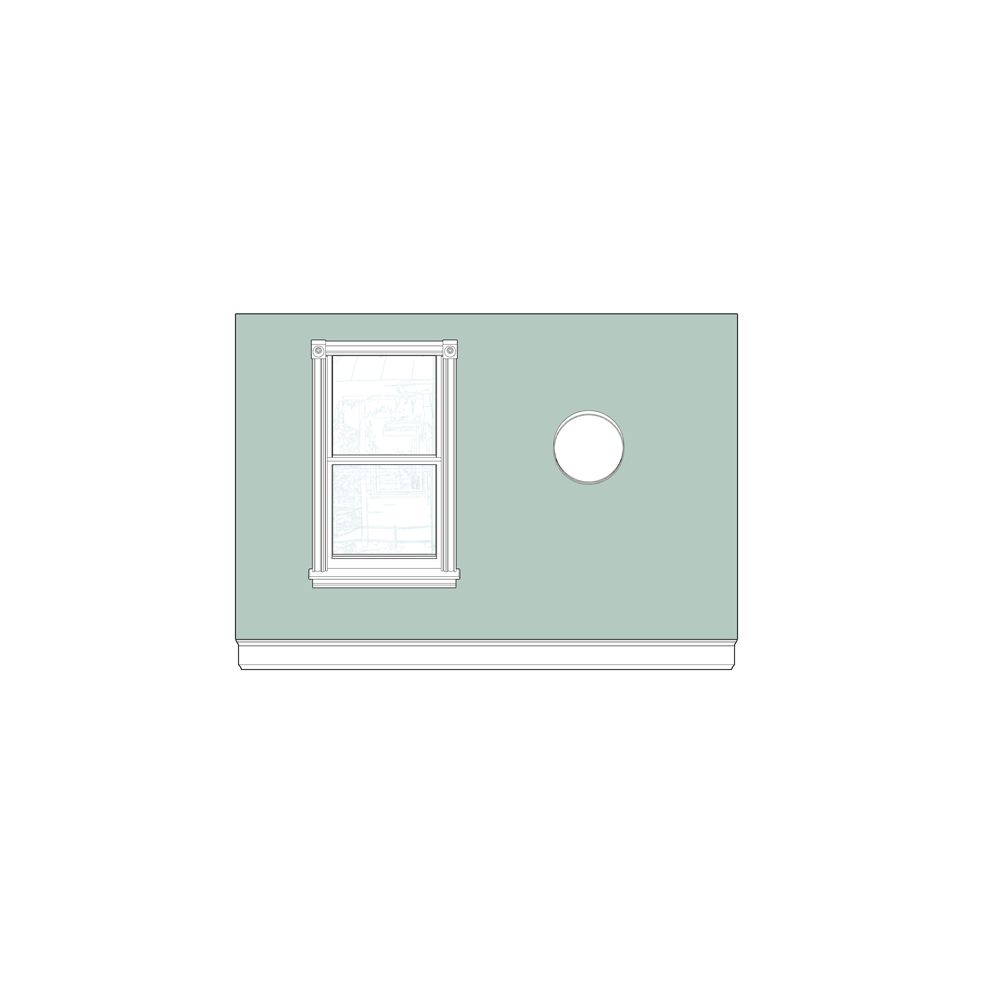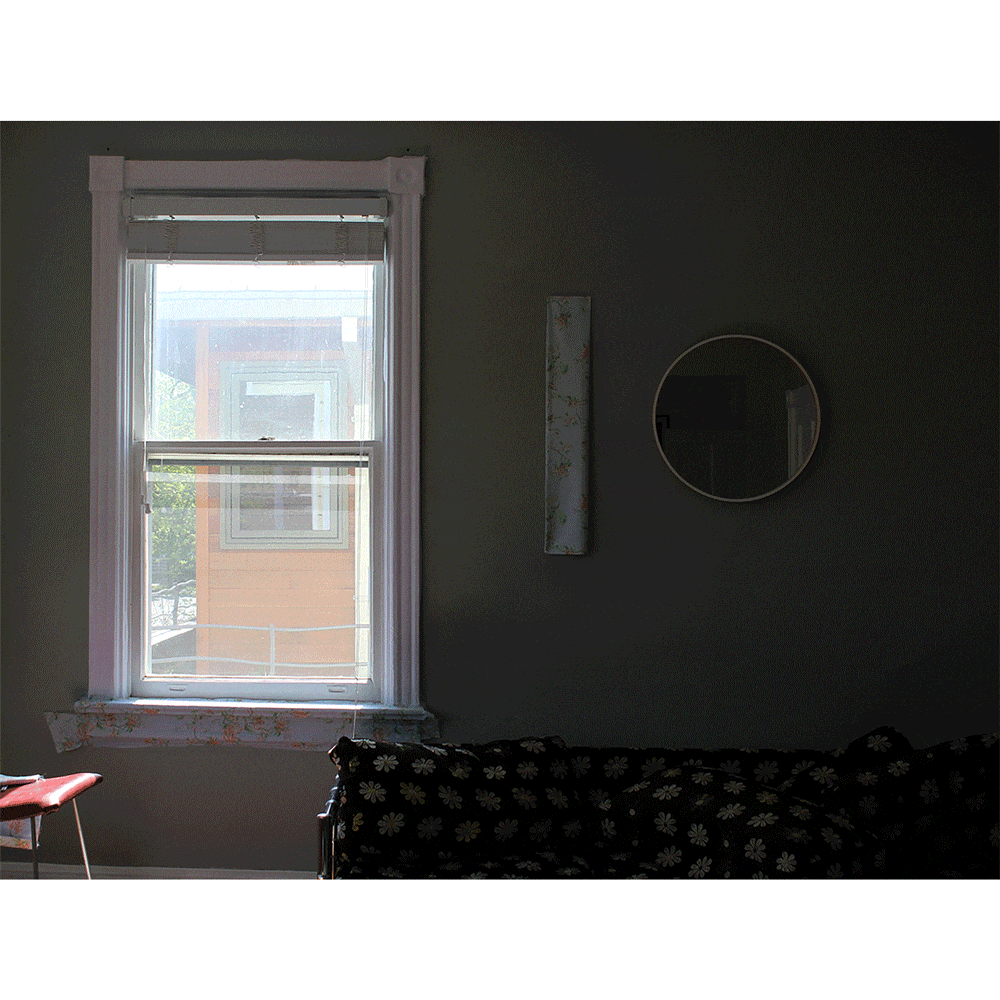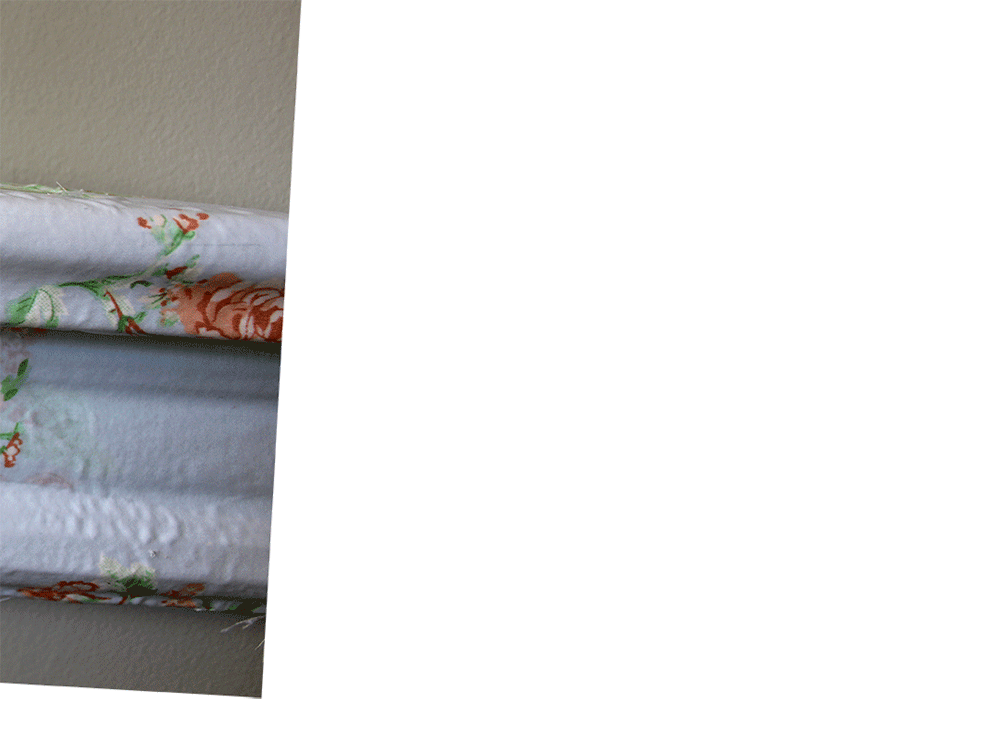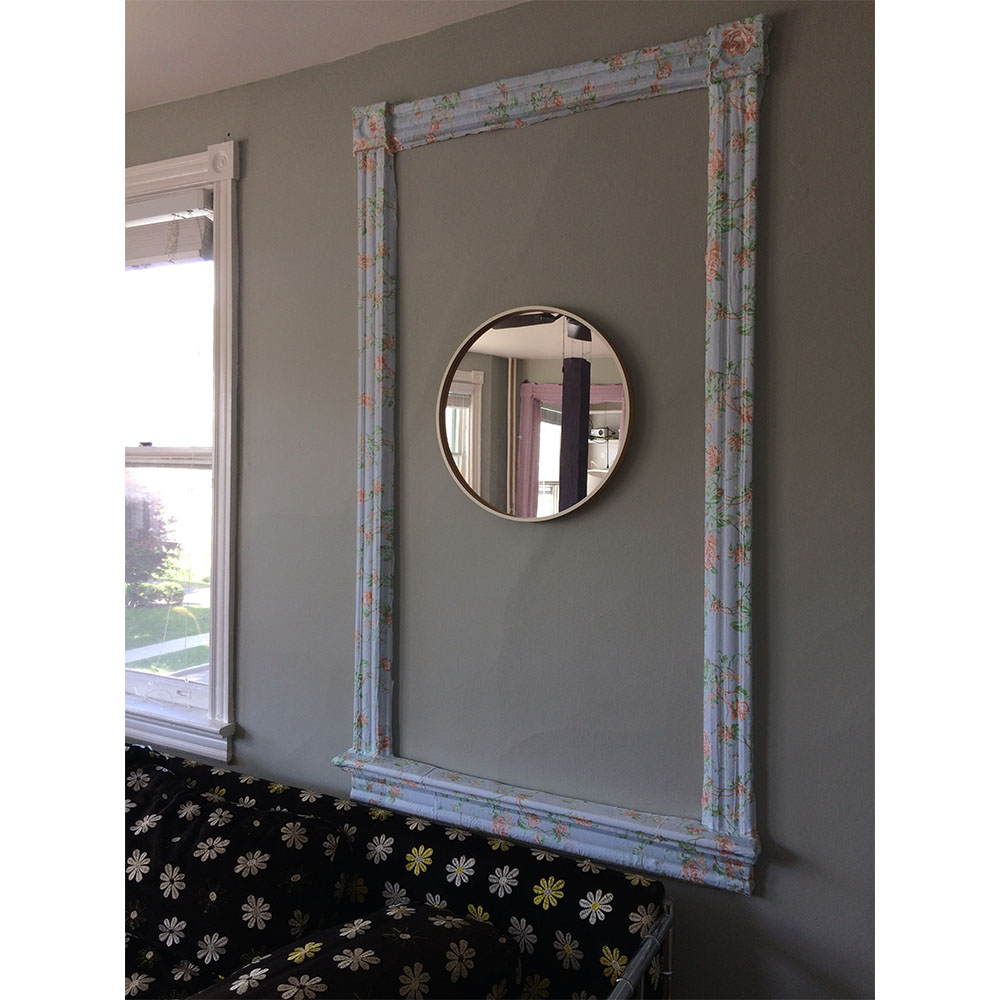Surface in Place



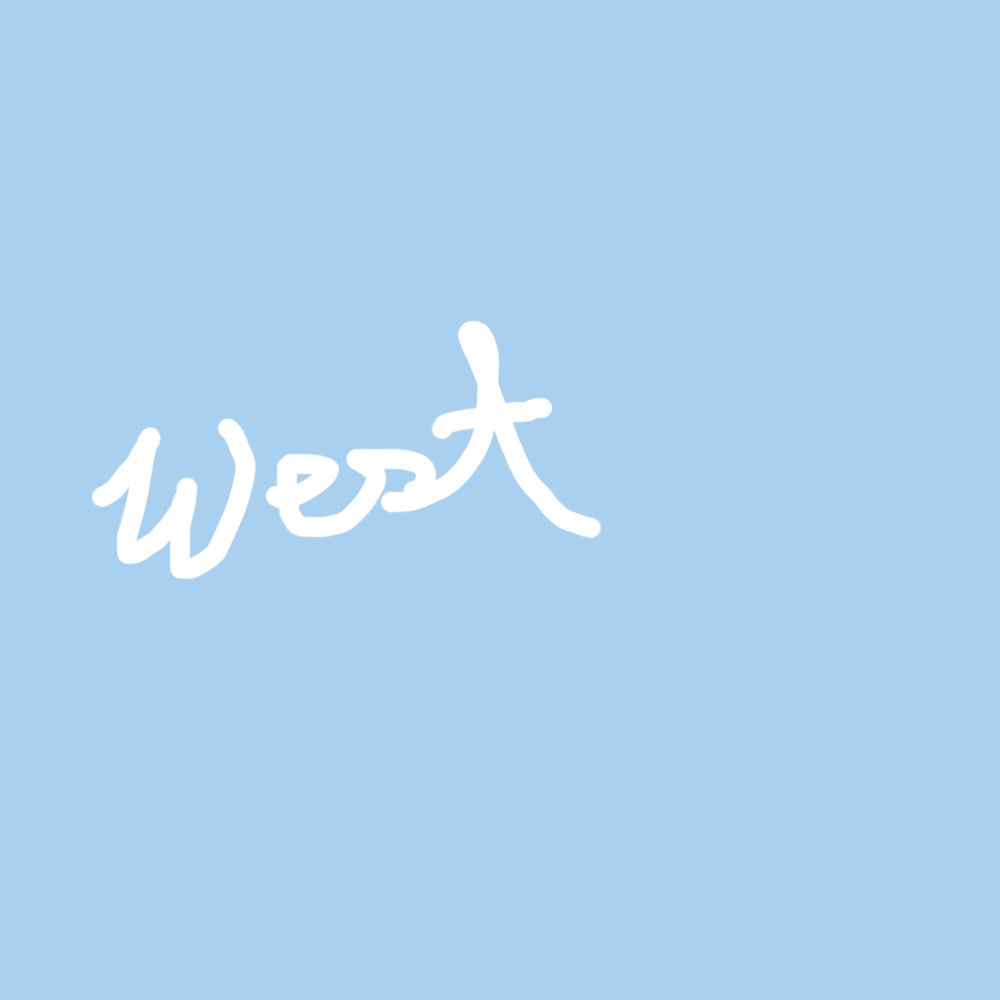
^ click through words/images/illustrations above ^
Princeton University M.Arch Thesis
May 2020
advised by Monica Ponce de Leon and Sylvia Lavin
My thesis research started with an obsession with rag rugs that grew to encompass tapestry weaving and eventually the larger practice of covering architecture in fabric (i.e. rugs, upholstery, curtains, wall hangings, strewn blankets).
Although the weaving of one of my walls (south) was one of the first things I started, I knew I probably would not finish it in time for the deadline. I began thinking about my apartment through the slow domestic acts that change it.
During the height of the covid-19 lockdown, certain "home" activities were coming to the forefront of social media; acts like baking sourdough bread, learning how to knit, and puzzling at the dinner table focused our attention inward and affected architectural change in our environments.
My thesis became about layering; building up and duplicating the domestic ornaments that surrounded me as time passed and my Architecture started to show more and more signs of habitation.
Zoom Transcript:
“Okay, Hello
Hi, Um My name’s Mariah.
And, or, it’s nice to see you and meet you all.
Uh My name’s Mariah. The title of my thesis is Surface in Place
Um and for the past 60 days or about I have become re-acquainted with the surfaces that surround me.
So I’m going to share my screen
And the site. My site. Is my apartment at 12 park pl in Princeton NJ
This is my bedroom. Ah, my kitchen. This is my living room…this is the main room for today’s intervention I guess. Since my apartment is an old crickety, creaky duplex in Princeton. It is finished with a lot of elaborate queen annish revival moldings that I am assuming my landlords bought at Lowes. I tried to find the CAD files online but I couldn’t find the exact ones so I went ahead and I measured them. Which was a very intimate process. And dusty.
And then, um, to begin. I tried to weave a wall. It’s still not finished which is kind of appropriate because I decided to do this out of an interest in slowness. Because whether it is baking sourdough bread, learning how to knit. Or puzzling at the dinner the dinner table. It is these slow domestic acts um they focus our attention inward…adding to and changing our environments. So once I do finish…it will look something like this. A freaky, Kind of like a freaky rug with a hole in it. And it’s, that’s because it’s the depiction or the documentation of a wall that is primarily made of holes. And the trim that surrounds them to cover up any cracks or uneven edges so. that’s. a starting point of my research.
Um, SO squeeze. I’ve been doing this thing called squeezing. Which will make more sense after a few images. This is my west, the west facing wall of my apartment. It has one window and a mirror. I decided to squeeze the trim around the window, duplicate it, and move it over to complete the composition of the wall. Here is the process. Um. SO, these are old sheets that I plaster onto the trim with watered down glue. And you can see how it starts out. It’s like the flowing piece of fabric and then it suctions to the architecture and then I peel it off and then I put it where it goes. So that’s the first one. And there’s a detail. Um so up next. Squeeze and crawl. Um, this is the north wall. A wall with a lot of doors to nowhere. The only one we actually walk through is the one were I didn’t draw the door. The one to left of. the doorway to the left of that is a closet, and then the doorway to the left of that is um it goes to my roommate’s bedroom but he already has two other doors so he doesn’t really use that one. And I thought I would just complete the set with a third. So that, this is that happening there. Um and the, you’ll notice that the images um are maybe giving you a little too much information about my living and my lifestyle. But that’s kind of part of the point. Is that the inhabitation of the site cant really be separated from the representation of it. And then there they are together. Um also I noticed that the floorboards lined up really well with the defunct um bedroom door so I thought maybe they could crawl up and cover it. Um, and this is those doing that. A bunch of little wood worms. And um, while I was doing this I got a little stir crazy so I decided to take them on walks with me bc I was. I. it was just too much sitting, it was hard to focus, um you could think of this as about 22 1.5 hour long walks. Just around Princeton. And there it is. Next to the one that came before it. Auh. Squeeze and wrap. This is the south facing wall. And that’s the one with all the holes in it. And I thought, you know with all the light maybe the window frame could duplicate until it becomes blinds. So I did that. Um, and there it is doing that. And then, the radiator, I have two right now, so there’s a possibility that it could wrap around the bottom of the wall. Like a little scarf to keep it warm at night. And this process was a little strange ah but yeah and I so I crocheted an extension to the radiator and I tried to time it to making toast. The time it takes for me to make one piece of toast how much do I crochet. And its about half a row. And just it ended up being like just a lot of toast. Um so there it is there. And there it is going to the other side. Um then squeeze and repeat so kind of self explanatory but it’s the last wall, the east facing wall. We have this row of columns upon entering the living room. It kind of sections off the room so I thought to duplicate those and placing them elsewhere. And then giving doorways to the part of the wall that we actually do walk through. And this is that. And then it created, so we also eat we use the living room as a dining room. So it created a more formal dining space and a clearer um direction on where to walk. And then there they are all together. And the end result is more or less a living room that is uh looking at itself. I guess and appraising the work that it’s doing.
I will stop sharing for a minute. And im going to shed my virtual background, um and just give you a quick tour. This is my living room. Or it’s supposed to be a little. It’s uncomfortable. Um so we could walk through like this. This is the columns you walk through. This is the double column. And we could walk around and see this is the door frame. And the back side of one of the columns. They’re hollow. they don’t touch the ceiling. The unfinished crawling wood. And the frames that I’ve made and there are some other things. That’s the radiator the weaving and the rest. And then I mean I made all these, a few of these things quite a bit ago. So they have started to deform and slump. Which is part of the point and it is kind of what architecture does, so I have a little demonstration that I’ll end with to try to clarify part of my interest. My apartment is kind of hilariously saggy. And that is just to say or to clarify that the point of the work that I’ve done over the past few months is not to um, offer soft architecture as an alternative to the norm. but to assert that architecture in its entirety um is already quite soft. And it sags and deforms. And it is only complete once it has all its finishes. So. Thanks.
May 2020
advised by Monica Ponce de Leon and Sylvia Lavin
My thesis research started with an obsession with rag rugs that grew to encompass tapestry weaving and eventually the larger practice of covering architecture in fabric (i.e. rugs, upholstery, curtains, wall hangings, strewn blankets).
Although the weaving of one of my walls (south) was one of the first things I started, I knew I probably would not finish it in time for the deadline. I began thinking about my apartment through the slow domestic acts that change it.
During the height of the covid-19 lockdown, certain "home" activities were coming to the forefront of social media; acts like baking sourdough bread, learning how to knit, and puzzling at the dinner table focused our attention inward and affected architectural change in our environments.
My thesis became about layering; building up and duplicating the domestic ornaments that surrounded me as time passed and my Architecture started to show more and more signs of habitation.
Zoom Transcript:
“Okay, Hello
Hi, Um My name’s Mariah.
And, or, it’s nice to see you and meet you all.
Uh My name’s Mariah. The title of my thesis is Surface in Place
Um and for the past 60 days or about I have become re-acquainted with the surfaces that surround me.
So I’m going to share my screen
And the site. My site. Is my apartment at 12 park pl in Princeton NJ
This is my bedroom. Ah, my kitchen. This is my living room…this is the main room for today’s intervention I guess. Since my apartment is an old crickety, creaky duplex in Princeton. It is finished with a lot of elaborate queen annish revival moldings that I am assuming my landlords bought at Lowes. I tried to find the CAD files online but I couldn’t find the exact ones so I went ahead and I measured them. Which was a very intimate process. And dusty.
And then, um, to begin. I tried to weave a wall. It’s still not finished which is kind of appropriate because I decided to do this out of an interest in slowness. Because whether it is baking sourdough bread, learning how to knit. Or puzzling at the dinner the dinner table. It is these slow domestic acts um they focus our attention inward…adding to and changing our environments. So once I do finish…it will look something like this. A freaky, Kind of like a freaky rug with a hole in it. And it’s, that’s because it’s the depiction or the documentation of a wall that is primarily made of holes. And the trim that surrounds them to cover up any cracks or uneven edges so. that’s. a starting point of my research.
Um, SO squeeze. I’ve been doing this thing called squeezing. Which will make more sense after a few images. This is my west, the west facing wall of my apartment. It has one window and a mirror. I decided to squeeze the trim around the window, duplicate it, and move it over to complete the composition of the wall. Here is the process. Um. SO, these are old sheets that I plaster onto the trim with watered down glue. And you can see how it starts out. It’s like the flowing piece of fabric and then it suctions to the architecture and then I peel it off and then I put it where it goes. So that’s the first one. And there’s a detail. Um so up next. Squeeze and crawl. Um, this is the north wall. A wall with a lot of doors to nowhere. The only one we actually walk through is the one were I didn’t draw the door. The one to left of. the doorway to the left of that is a closet, and then the doorway to the left of that is um it goes to my roommate’s bedroom but he already has two other doors so he doesn’t really use that one. And I thought I would just complete the set with a third. So that, this is that happening there. Um and the, you’ll notice that the images um are maybe giving you a little too much information about my living and my lifestyle. But that’s kind of part of the point. Is that the inhabitation of the site cant really be separated from the representation of it. And then there they are together. Um also I noticed that the floorboards lined up really well with the defunct um bedroom door so I thought maybe they could crawl up and cover it. Um, and this is those doing that. A bunch of little wood worms. And um, while I was doing this I got a little stir crazy so I decided to take them on walks with me bc I was. I. it was just too much sitting, it was hard to focus, um you could think of this as about 22 1.5 hour long walks. Just around Princeton. And there it is. Next to the one that came before it. Auh. Squeeze and wrap. This is the south facing wall. And that’s the one with all the holes in it. And I thought, you know with all the light maybe the window frame could duplicate until it becomes blinds. So I did that. Um, and there it is doing that. And then, the radiator, I have two right now, so there’s a possibility that it could wrap around the bottom of the wall. Like a little scarf to keep it warm at night. And this process was a little strange ah but yeah and I so I crocheted an extension to the radiator and I tried to time it to making toast. The time it takes for me to make one piece of toast how much do I crochet. And its about half a row. And just it ended up being like just a lot of toast. Um so there it is there. And there it is going to the other side. Um then squeeze and repeat so kind of self explanatory but it’s the last wall, the east facing wall. We have this row of columns upon entering the living room. It kind of sections off the room so I thought to duplicate those and placing them elsewhere. And then giving doorways to the part of the wall that we actually do walk through. And this is that. And then it created, so we also eat we use the living room as a dining room. So it created a more formal dining space and a clearer um direction on where to walk. And then there they are all together. And the end result is more or less a living room that is uh looking at itself. I guess and appraising the work that it’s doing.
I will stop sharing for a minute. And im going to shed my virtual background, um and just give you a quick tour. This is my living room. Or it’s supposed to be a little. It’s uncomfortable. Um so we could walk through like this. This is the columns you walk through. This is the double column. And we could walk around and see this is the door frame. And the back side of one of the columns. They’re hollow. they don’t touch the ceiling. The unfinished crawling wood. And the frames that I’ve made and there are some other things. That’s the radiator the weaving and the rest. And then I mean I made all these, a few of these things quite a bit ago. So they have started to deform and slump. Which is part of the point and it is kind of what architecture does, so I have a little demonstration that I’ll end with to try to clarify part of my interest. My apartment is kind of hilariously saggy. And that is just to say or to clarify that the point of the work that I’ve done over the past few months is not to um, offer soft architecture as an alternative to the norm. but to assert that architecture in its entirety um is already quite soft. And it sags and deforms. And it is only complete once it has all its finishes. So. Thanks.
